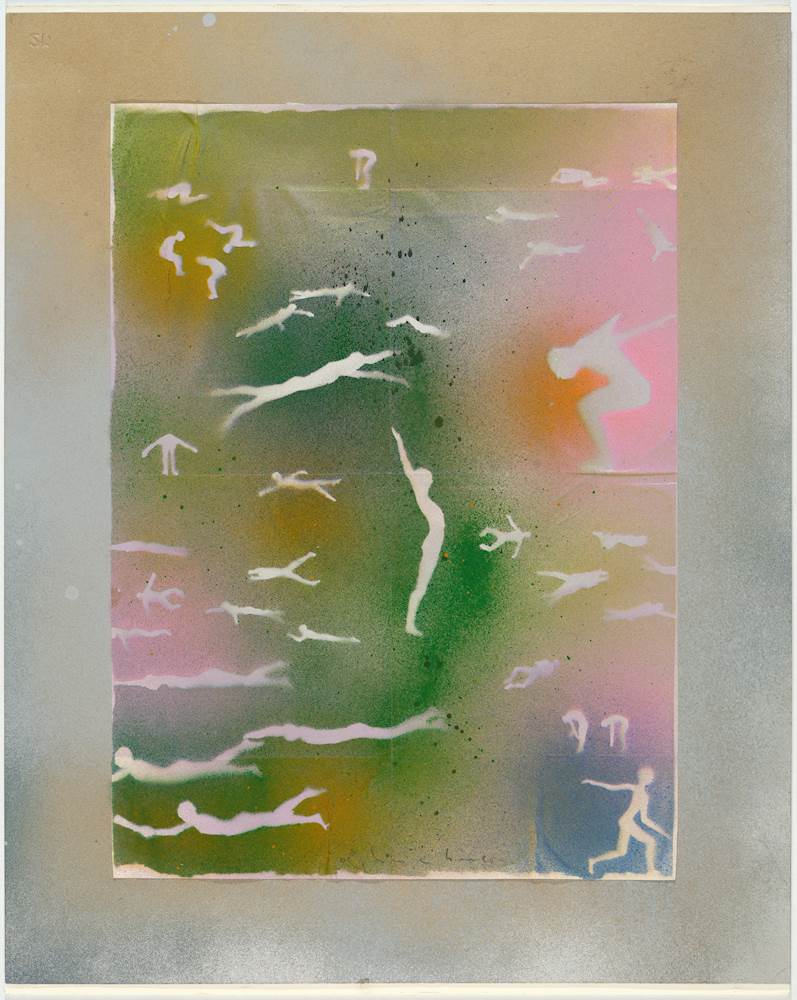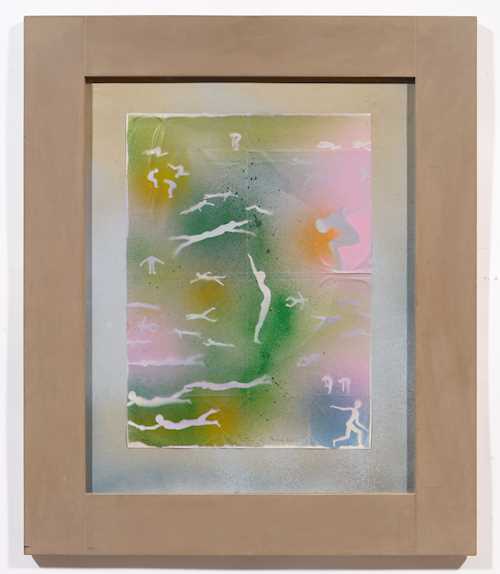
拍品 3449 - A211 战后和当代 - Donnerstag, 28. November 2024, 04.00 PM
ALIGHIERO BOETTI
(Turin 1940–1994 Rome)
Tuffatori. 1980.
Pochoir on paper, collage on thin cardboard.
Signed lower centre: alighiero boetti.
55 × 44.5 cm.
Certificate:
Provenance:
"I have done a lot of work which presents a visual disorder that is actually the representation of a mental order. It’s just a question of knowing the rules of the game. Someone who doesn’t know them will never see the order that reigns in things. It’s like looking at a starry sky. Someone who does not know the order of the stars will see only confusion, whereas an astronomer will have a very clear vision of things." Alighiero Boetti
In the 1960s, the Italian artist Alighiero Boetti joined Arte Povera, a movement that deliberately utilised ordinary and everyday materials. A self-taught artist, he achieved international recognition in the early 1970s. Boetti, who explored geopolitical, cultural and social themes, is known for his conceptual works, which also utilise techniques such as embroidery and collage. His career was enriched by regular trips to Afghanistan, until political unrest at the end of the 1970s made this impossible. Boetti's artistic approach, which is intellectual, playful and experimental, is reflected in his works.
Alighiero Boetti deliberately allows concepts such as order and chaos, the individual and the collective, reality and fiction, to coalesce in his works. In ‘Tuffatori’, he skilfully puts these key themes into practice by presenting figures in a range of activities such as diving, jumping and swimming. As Boetti explains in his statement above, the apparent visual disorder of these figures, all depicted in light or grey colours, in fact represents a deeper spiritual order. Almost every figure embodies both individual and collective aspects and simultaneously radiates uniqueness and group affiliation. Their arrangement in the water, which he shows in shades of green, blue, pink and red, plays with the boundaries of organisation and chaos - a game that may appear random to the viewer, but is subject to strict considerations. This dynamic composition emphasises both the artistic sophistication and the complexity of the work and invites us to question the dividing line between reality and fiction.
In the 1960s, the Italian artist Alighiero Boetti joined Arte Povera, a movement that deliberately utilised ordinary and everyday materials. A self-taught artist, he achieved international recognition in the early 1970s. Boetti, who explored geopolitical, cultural and social themes, is known for his conceptual works, which also utilise techniques such as embroidery and collage. His career was enriched by regular trips to Afghanistan, until political unrest at the end of the 1970s made this impossible. Boetti's artistic approach, which is intellectual, playful and experimental, is reflected in his works.
Alighiero Boetti deliberately allows concepts such as order and chaos, the individual and the collective, reality and fiction, to coalesce in his works. In ‘Tuffatori’, he skilfully puts these key themes into practice by presenting figures in a range of activities such as diving, jumping and swimming. As Boetti explains in his statement above, the apparent visual disorder of these figures, all depicted in light or grey colours, in fact represents a deeper spiritual order. Almost every figure embodies both individual and collective aspects and simultaneously radiates uniqueness and group affiliation. Their arrangement in the water, which he shows in shades of green, blue, pink and red, plays with the boundaries of organisation and chaos - a game that may appear random to the viewer, but is subject to strict considerations. This dynamic composition emphasises both the artistic sophistication and the complexity of the work and invites us to question the dividing line between reality and fiction.
CHF 10 000 / 18 000 | (€ 10 310 / 18 560)


